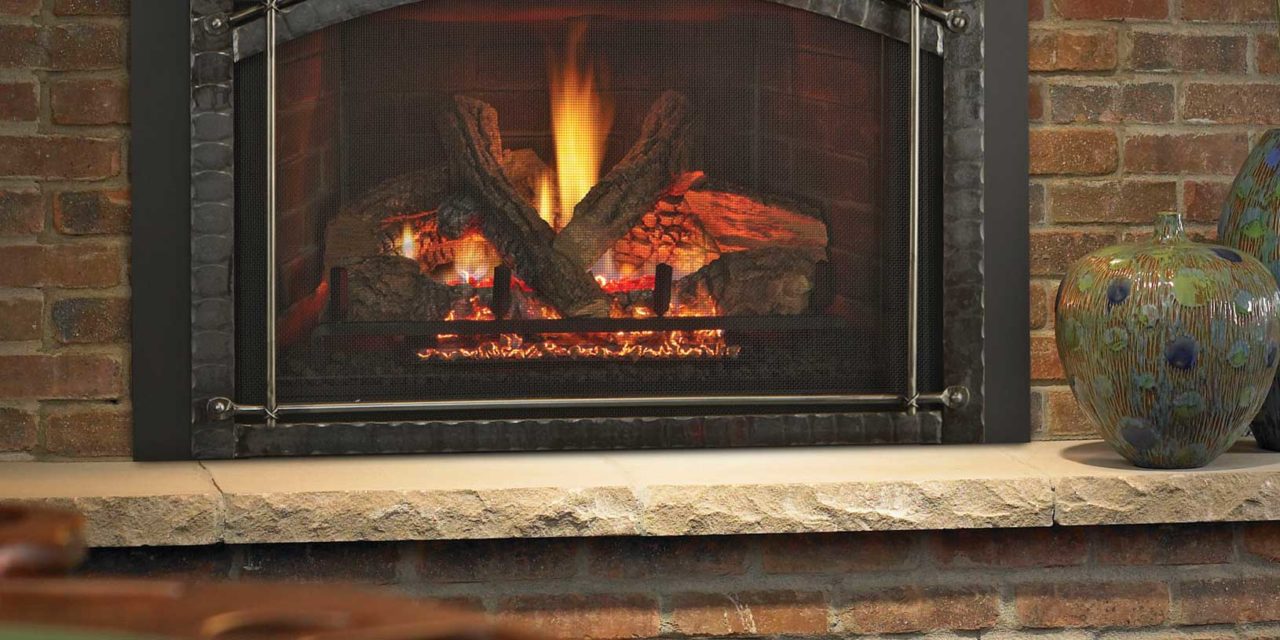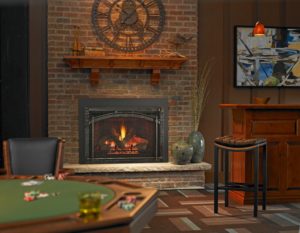by Jeffrey B. Roth
For the majority of human history, the options available to heat homes were limited—wood-fueled fire pits and fireplaces; or in some areas of the globe, peat moss, coal, dung or naturally occurring geothermal sources, most commonly volcanic hot springs.
Modern heating systems encompass a spectrum of fuels, including electric, gas, geothermal and solar units. Different designs serve different heating functions, said Carl Larkin, owner of Westminster-based Fireworks Inc.
An easy way to categorize heating units is by function—primary, secondary, emergency and ornamental, Larkin said. Fireworks sells, installs and services grills, gas fireplaces, mantels, pellet stoves and wood stoves.
“We offer an assortment of hearths, fireplaces and stoves to burn wood,” Larkin said. “We have a pretty wide range of products that use wood, pellets and gas.”
Fireworks specializes in supplemental heating and ornamental units, Larkin added. Customers frequently inquire about emergency, supplemental and zone heating options.
“As far as technology goes, the hottest thing we got right is a new technology wood stove,” Larkin said. “You put the wood in and light it and you can adjust the air intake. It is similar to a pellet stove and has sensors to check on temperature. You set the temperature and it controls the rate of burn.”
The Quadra-Fire pellet stove is available in two sizes, a small stove that can provide a maximum of 20 hours of constant heating and a large size that provides 40 hours of heat, which Larkin said was unheard of with older units. It also has settings for different biomass fuel types, such as corn, sunflower seeds, straws, grasses and animal waste. It does require electricity to operate, but it can operate on battery power during electric outages.
Jeff Ginco, Tevis Propane hearth and grill specialist, said the company has been in business since 1999. SH Tevis & Sons has served Carroll County, since 1932.
“Technology has definitely found its way into the hearth industry,” Ginco said. “Gas fireplaces and inserts can come with remote controls that will control everything on the fireplace. Flame height, fan speed, even a dimmer for accent lighting is all controlled by a single remote.”
The average price for gas, wood or pellet stoves ranges from $4,000-$5,000 on a typical unit and up to $10,000 or more on high-end gas or wood-fueled system, Ginco explained. The heating efficiency of gas, wood and pellet stoves is about 70-80 percent.
“Carroll County is more diverse when it comes to alternative heat sources,” Ginco said. “There is an even mix of people who will heat with pellet, wood or gas.”
Mark Utz, of Westminster, is the territory manager for WaterFurnace International, based in Fort Wayne, Indiana, which markets, installs and maintains geothermal heating and cooling systems. WaterFurnace is the leading manufacturer of geothermal residential heating and cooling products in the country.
“We work directly with heating and air conditioning contractors; and they are our dealers who sell, design and install our geothermal products,” Utz said. “Our products are capable of heating and cooling a house, with forced air or we can do it with water, hydronically. The first patent for geothermal was registered in 1918; and it became more widely accepted in 1980s, with the introduction of plastic pipes more reliable and more feasible to install on a larger scale.”
Ground temperatures at a depth of five feet remains at a constant 50 degrees. The unit features a heat pump that transfers heat energy from the ground to the house, in the winter; and from the house to the ground in the summer, Utz said.
In the winter, for every one kilowatt of electricity used, the unit actually transfers four to five kilowatts of energy to the ground. It’s efficiency is rated 400-500 percent.
“There are two types of geothermal products,” Utz said. “There is closed loop, the predominant type of system installed in this area. There is also an open loop, where water is pulled from the ground, run it through the geothermal unit and then discharge that water into an acceptable location, such as a pond or stream.”
If a property has enough grass to require mowing, it should be adequate for a closed loop system. A drilling rig drills vertically into the ground, Utz said. As long as the property is large enough to accommodate a drilling rig, a closed loop system can be installed.
“We typically do have some type of back-up heat with our systems,” Utz said. “The reason for that is in this area, the heating load is greater than the cooling load. In the winter, when the outdoor temperatures get very low, the system needs a supplemental heat source—electricity or a fossil fuel furnace.”
Chris Franklin, business manager for Modern Comfort Systems, one of the Tevis family of companies, based in Westminster, said the company offers an inclusive range of heating and cooling systems.
The latest technologies include “WiFi-enabled thermostats for wireless remote connectivity through smartphones and home automation,” Franklin said. “The homeowner now has the ability to control the home environment on a room-by-room basis.”
Homeowners, who are weighing the pros and cons of repairing or replacing current heating systems should consider four key factors, Franklin said. Determine the age of the system; its operational costs; whether major repairs have been previously done to the system; and whether or not the current system provides comfort throughout the home.
“Some of the WiFi systems can be used with older systems,” Franklin said. “Call a professional to evaluate your system and determine whether it’s compatible with WiFi. The biggest trend is variable-speed heat pumps, which use inverter technology and a rotary compressor to deliver variable-speed control, which can provide significant energy savings.”
Homeowners looking to replace outdated heating systems, or installing a system in a new residence or adding supplemental heating options, the latest systems can provide convenience, lower energy bills and reduce the carbon footprint of a residence. Coupled with apps for smartphones and computers, technology allows homeowners to constantly monitor and control the temperature remotely.
For more information on Fireworks Inc., visit www.fireworksinc.com; for more information on Tevis, visit www.tevispropane.com; for more information on WaterFurnace International, visit www.waterfurnace.com; and for more information on Modern Comfort Systems, visit www.moderncomfortsystems.com.


